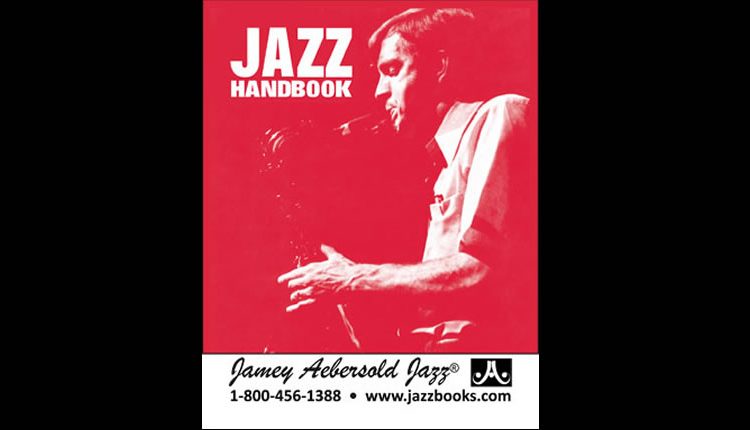Improvisation Handbook
Jazz Handbook by Jamey Aebersold, Jamey Aebersold Jazz, 2000, 2010, 2013, www.jazzbooks.com. Download a free hard copy from web site in English and French. Designed to provide improvisation basics to both music educators and aspiring students: middle/high school and beyond. Includes a heart-of-jazz, correlated discography.
Jazz Handbook, perhaps the best keep secret in jazz education, the best bargain for Jazz 101. Besides being free, it smoothly covers a plethora of vital jazz education information. The well organized content is integrated with musical examples to study and perform. Jamey’s clear, straight-forward and teaching style presents techniques, tools and tricksto better understand thefundamentals of scales, chords, patterns, listening and soloing. He also discusses ear training, theory, an essential jazz master’s discography, jazz articulations, practice routine process, Blues progressions and piano voicings. You’ll like the theory tests and handy transposition charts. A copy of highly 56-page handbook should be in every jazz student’s hands; and recommended, required reading and review by students and teachers alike. It’s that good.
Naturally this booklet emphasizes play-along recordings as the foundation for mastering and instilling pulse, time and swing as student experience the cool excitement of playing with a good rhythm section. Jamey cautions students to be patient, don’t play the same tunes over and over, and don’t expect everything to come in one try. Students are encouraged to train their ears to really hear the music and all that it takes to make good jazz. Musically, there are ten best music practice suggestions offered that all musicians can adopt.
1. Play with tone. Wind players – support your sound. Don’t play staccato.
2. Make phrases flow nationally, even when playing scales and exercises.
3. Mentally sing the exercises, scales, patterns as you play them.
4. If an exercise is hard, slow it down. Then gradually increase the tempo.
5. Listen to every note you play. Match your mind’s ideas.
6. Be patient. You’re not the first to make mistakes.
7. Use jazz articulations on exercises and scale/chord practice.
8. Improvise some every day. That’s the REAL YOU. Play what you hear in your head.
9. Learn the Blues in Bb & F concert keys.
10. Memorize everything you can. Know what it is you are trying to play.
Also included is a recommended comprehensive course of play-along study from specific play-along volumes prescribed in the following order: volumes 1, 24, 3, 21, 116, 84, 54, 70, 47 and 120, giving music educators direction and focus guiding students in systematic approach for studying jazz improvisation in an expanded format. Rarely in the education field, is such a free handbook offered to students and teachers, that is so comprehensive and engaging. As a plus, it connects directly with the ultimate master library of jazz instruction publications that can’t be duplicated elsewhere at www.jazzbooks.com and 800-456-1388 with its catalog of 36 pages of landmark products making it a best buy in the entire music education industry and free as well! Together, the handbook and Jamey’s catalog are definite best buys in the entire jazz market.


